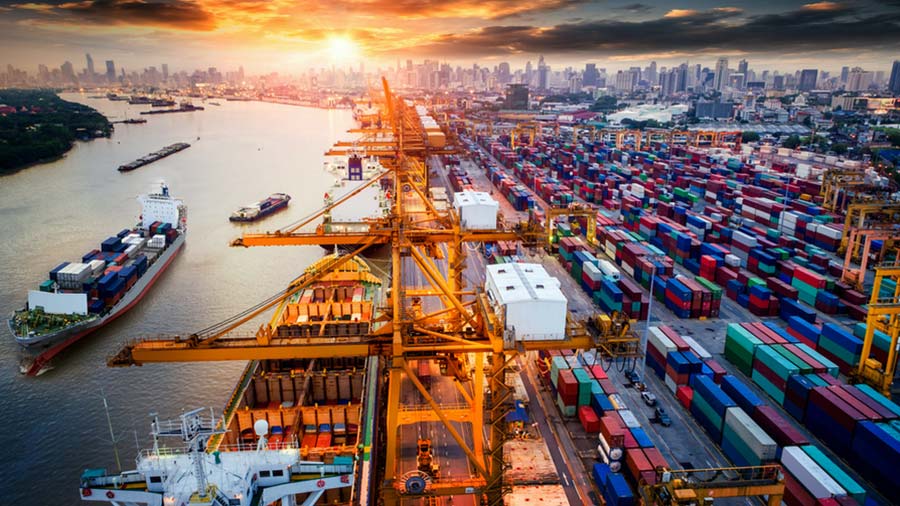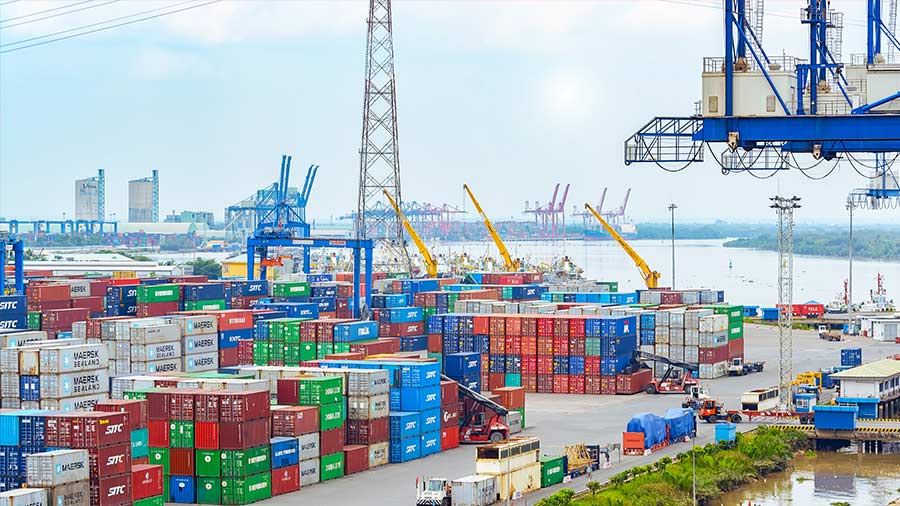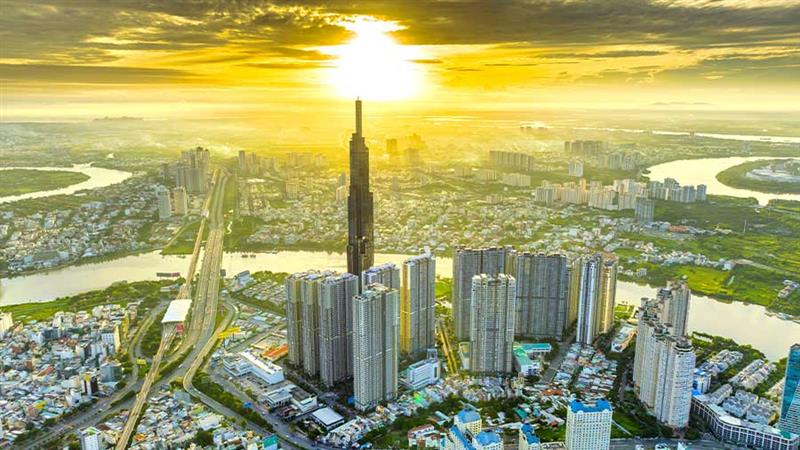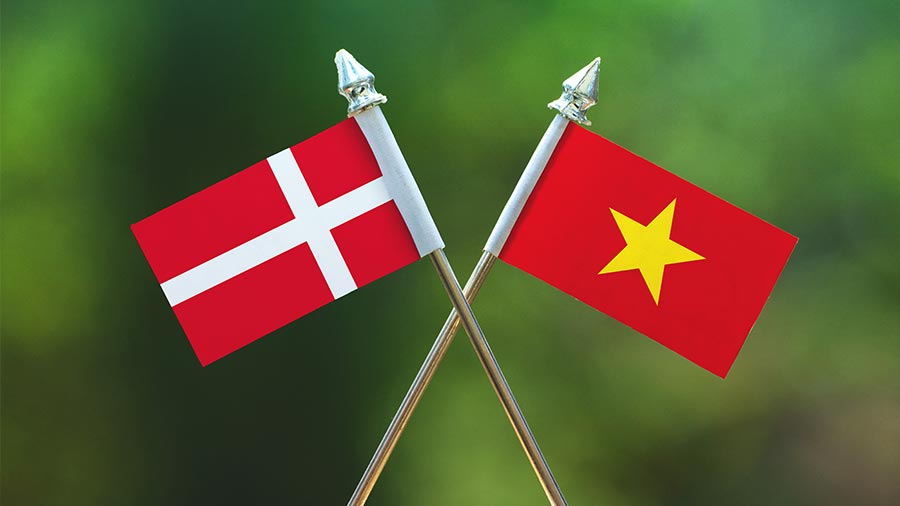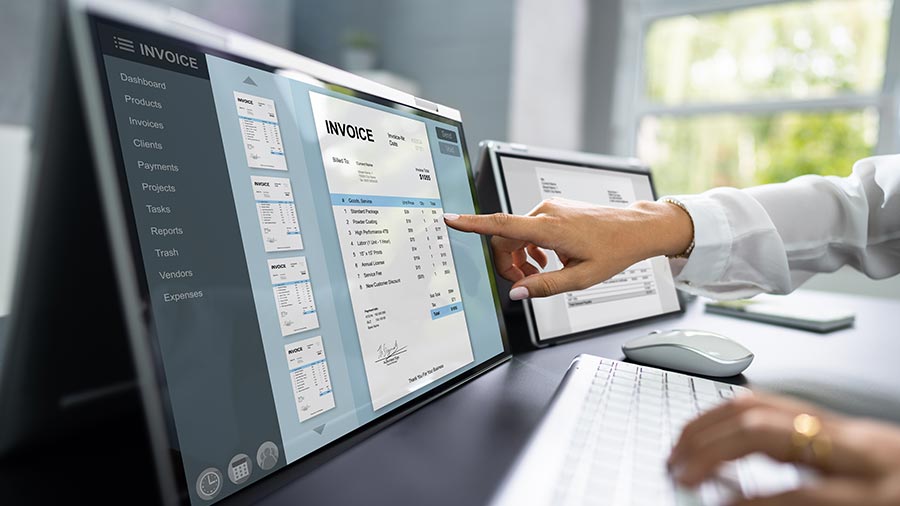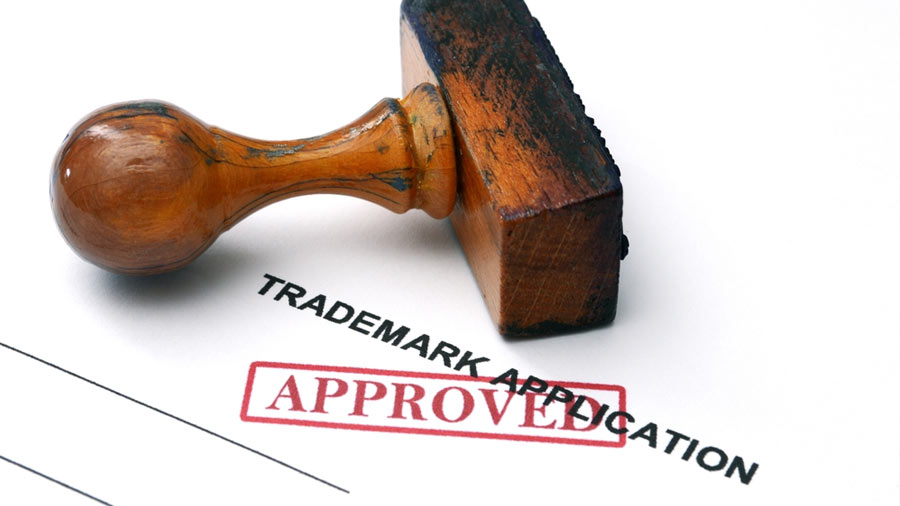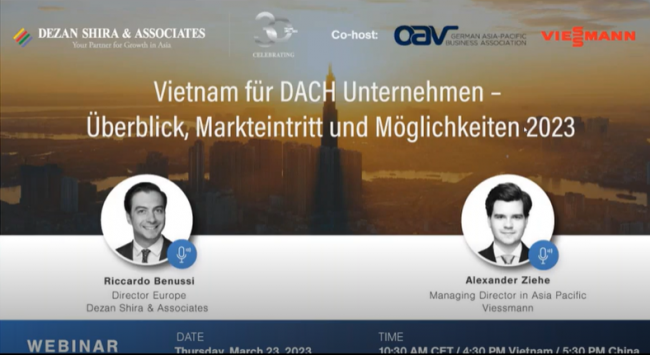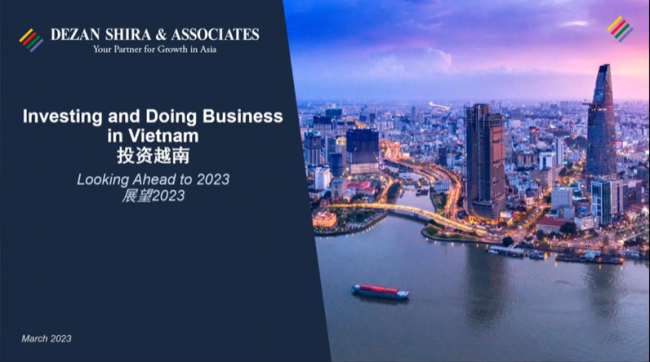The Vietnamese government offers numerous investment-related business incentives and is continually making further improvements through both reforms and by further upgrading its incentives to maintain the country’s high appeal to foreign investors.
Vietnam’s Law on Investment specifies the three forms of incentives that are available to companies operating within the country, in Section 1, Article 15.1:
|
Corporate Income Tax |
Application of a lower rate of corporate income tax for a certain period of time or throughout the project execution; |
|
Import Duties / Tax |
Exemption or reduction of import duties or tax on goods imported as fixed assets on raw materials, supplies, and parts used for the project; |
|
Land rent and levies |
An exemption, reduction of land rents and land levy. |
Corporate Income Tax (CIT) incentives
Corporate Income Tax Incentives are one of the most attractive features of the Vietnamese business landscape and tend to be one most important among investment incentives to foreign investors. Corporate income tax (CIT) incentives are granted to both foreign and local investors, to promote investment in sectors or areas that are on par with the national development strategies.
The major tax incentives that are available in Vietnam are summarized in this section.
The types of projects that qualify, and the nature of incentives that apply are specified in Vietnam’s Law on Investment, and its subsequent decrees and circulars.
There are two main CIT incentives in Vietnam: Preferential tax rates, which are reduced tax rates; Tax holidays, which are tax exemptions. The respective types when granted, may apply often for a limited time period, or in some instances for the lifetime of the project.
Below is an overview of the rates commonly applied, based on the location, industry, investment zone, and other factors.
Preferential tax rates
The different preferential rates include:
- 10 percent for the lifetime of the entire project;
- 10 percent for 15 years from the first year of income generation;
- 15 percent for the lifetime of the entire project;
- 17 percent for the lifetime of the entire project;
- 17 percent for 10 years from the first year of income generation.
Tax holiday rates
Tax exemptions include:
- Tax exemption for 4 years, 50 percent reduction of payable tax amounts for 9 subsequent years;
- Tax exemption for 4 years, 50 percent reduction of payable tax amounts for 5 subsequent years;
- Tax exemption for 2 years, 50 percent reduction of payable tax amount for 4 subsequent years.
Incentives in economic zones
Vietnam has encouraged the establishment of economic zones throughout the country. These zones provide increased access to infrastructure, pools of talent, and networks of suppliers. Foreign investors in these zones also benefit from tax incentives extended by the Vietnamese government.
Most economic zones will qualify an investor for tax holiday incentives. In limited cases, where the zone is located in a disadvantaged area, a preferential rate of corporate income tax will also apply. Foreign investors must set up their operations inside of a zone that offers incentives in order to qualify for preferential treatment or tax holidays.
|
Economic Zone Investment Incentives in Vietnam |
|
|
Economic zones |
Economic zones in extremely disadvantaged areas |
|
|
|
* Rate determined on a case by case basis ** From the first year of profit generation |
|
Vietnam’s economic zones are a common entry point for a variety of firms. Firms in need of specialized labor, easy access to ports, and good business conditions should strongly consider setting their operations up within one of Vietnam’s industrial zones.
Incentives for disadvantaged locations
The Vietnamese government provides location-based incentives for regions based on the levels of development and investment. The government provides these incentives as a means of attracting capital and improving development in these areas. The areas that the government selects for incentives are consistently located near Vietnam’s borders with China and Laos as well as the southern Mekong region.
Vietnam provides two tiers of incentives to investment projects depending on the level of development and needs in the area. Foreign investors can currently choose between locations that are “disadvantaged” and those that are “extremely disadvantaged.” Investments in both locations benefit from preferential corporate income tax as well as tax holidays with the level of incentive directly tied to the level of disadvantage within these regions.
|
Disadvantaged Location Investment Incentives in Vietnam |
|
|
Disadvantaged areas |
Extremely disadvantaged areas |
|
|
|
Firms operating in difficult areas are taxed at 17 percent for 10 years of revenue generation. This period also includes a tax holiday for the first two years, followed by a 50 percent reduction for the subsequent four years; Firms operating in industrial parks are eligible for two years of tax holidays, followed by a 50 percent corporate tax reduction for the subsequent four years.
|
Firms operating in extremely difficult areas, special economic zones (SEZs) or high-tech zones (HTZs) are taxed at 10 percent for the first 15 years of revenue generation. This period also includes a tax holiday for the first four years followed by a 50 percent reduction for the subsequent nine years;
|
|
* From the first year of income generation ** From the first year of profit generation
Note: Projects invested into within economic zones may be liable to different treatment.
|
|
Investors must have sourced income from an investment in an area currently classified as disadvantaged or extremely disadvantaged for incentives to apply. Government Decree 118/2015/ ND-CP provides the latest guidance on where incentives are applied throughout the country and should be consulted closely by interested parties. Companies involved in low value-add production are often the best positioned to take advantage of the challenges in these regions. Those who do so will retain a strong first mover advantage as Vietnam continues to rapidly develop.
Industry-based tax incentives in Vietnam
Prioritized sector incentives
Certain sectors in Vietnam are encouraged for investment, including industries that the government plans to incentivize, prioritize, or which are beneficial to society, and which summarize as follows:
|
Summary of Prioritized Business Lines and Projects Eligible for Investment Incentives In Vietnam |
|||
|
Class: |
High tech |
Large scale |
Social importance |
|
Description: |
Investment projects in the following sector categories:
|
Manufacturing projects with a minimum invested capital of VND 6,000 billion, and which meet one of the following
Manufacturing projects** with a minimum investment capital of VND 12,000 billion and which utilize certain technologies.
|
Investment projects in the following sector categories:
|
|
Incentives: |
|
|
|
|
* From the first year of operating income generation **from the first year of profit
Note: Projects invested into within economic zones may be liable to different treatment. |
|||
Government-encouraged sector incentives
Tax incentives apply to investment projects in specific sectors and areas with different socio-economic conditions as well as those in high-tech zones and economic zones in order to encourage the development of the economy, technology, and education of these regions. The tax incentives are as follows:
|
List of Incentives for Vietnam’s Government-Encouraged Sectors |
|
|
Applicable Investment Project Types: |
Preferential CIT rates |
|
17% tax rate applicable for 10 years. Plus: CIT exemption for up to 2 years and 50% CIT reduction for up to 4 subsequent years |
|
10% tax rate applicable for 15 years.
Plus: CIT exemption for up to 4 years and 50% CIT reduction for up to 9 subsequent years |
|
CIT exemption for up to 4 years and 50% CIT reduction for up to 9 subsequent years |
|
10% tax rate |
The preferential CIT rates above are applied from the first year the enterprise has turnover. The additional incentives of CIT exemption or reduction are applied from the first year in which the enterprise has taxable income.
In addition to tax incentives, tax reductions may be available for enterprises engaging in manufacturing, construction, and transportation activities, which employ numerous female or ethnic minority staff members.
Supporting Industries incentives: Decree 57 (2021)
Vietnam’s “Supporting Industries” are increasingly developing and play an essential role in Vietnam’s participation in global supply and value chains, and the development of related sectors helps the nation’s economy grow in a more sustainable manner, to help it avoid the middle-income trap, and attract quality foreign investment with positive technological spillover effects. For these reasons, building up the “Supporting Industry” sector is a priority area for Vietnam’s government, as it seeks to strengthen its low-cost manufacturing center and develop its hi-tech manufacturing base.
Decree 57 is the latest regulation in line with this vision. The decree went into effect on June 4, 2021, and came on the heels of Resolution 115, to similarly promote the development of supporting industries for the 2020-2030 period. It also provided financial support and relief to businesses that had been affected by the pandemic.
In summary, Decree No. 57/2021/ND-CP (Decree 57) allows for corporate income tax (CIT) incentives for enterprises invested in projects which manufacture prioritized supporting industry products before 2015. CIT incentives have been detailed in Circular 21/2016/TT-BTC and include industries such as
- Textile and garments;
- Footwear;
- Electronics;
- Automobiles;
- Machinery engineering; and,
- Hi-tech industries under certain conditions.
Eligible businesses can be entitled to CIT exemption for four years, 50 percent CIT reduction for nine years, and a 10 percent preferential tax rate for the first 15 years on income coming from the project, plus a tax holiday for 4 years, followed by a reduced CIT rate by 50 percent for the next 9 years. The incentive is retroactive, meaning the business can claim back the additional tax paid with a request to the tax authorities covering its investment prior to 2015. In addition, manufacturing projects that are claiming or have claimed CIT incentives under other incentive programs can claim CIT under Decree 57 for the remaining period.
Customs and Land Rental Incentives (non-tax based)
Customs duty exemptions
Businesses can also enjoy exemptions from import duty if they meet one of the following criteria:
- Goods are imported to form fixed assets of select projects prescribed under the law;
- Goods are imported for implementing export processing contracts with foreign parties;
- Raw materials and supplies are imported to directly serve the production of software products, and cannot be produced domestically;
- Goods are imported for use in scientific research and technological development, and cannot be produced domestically.
Land rental incentives
Subject to specific conditions, some investment projects can also enjoy land rental fee exemption:
|
Land Rental Incentives in Vietnam |
|
|
Applicable Investment Types: |
Exemption: |
|
Projects on the list of special investment encouragement sectors investing in areas of particularly difficult socio-economic conditions; |
Exemption for the whole operational period |
|
Projects on the list of special investment encouragement sectors investing in areas of difficult socio-economic conditions or projects on the list of investment encouragement sectors investing in areas of extremely difficult socio-economic conditions |
15 years of exemption |
|
Projects investing in areas of extremely difficult socio-economic conditions; projects in the list of special investment encouragement sectors; projects in the list of investment encouragement sectors investing in difficult socio-economic areas |
11 years of exemption |
|
Projects investing in areas of difficult socio-economic conditions; |
7 years of exemption |
|
Projects on the list of investment encouragement sectors; business and production relocation under urban planning or due to environmental pollution. |
3 years of exemption |
Special incentives
More recently, the Prime Minister issued Decision 29/2021/QD-TTg providing the levels, duration, and conditions for the application of special incentives for investment projects which are granted based on the satisfaction of the law-specified criteria on investment capital, high technology, technological transfer, added value, and value chain participation of Vietnamese enterprises.
The new regulation Is expected to encourage foreign investors with large capital amounts and high technologies to make long-term commitments with Vietnam while promoting the process of technology transfer and increasing the spillover effects of FDI.
FAQ: Capitalizing on New Support Measures for Your Business and Easing of Foreign Work
What new incentive measures supporting manufacturing and processing sectors affected by the pandemic?
The government has put forward several measures to help businesses affected by the pandemic. The first one is Decree 57 (Decree 57/2021/ND-CP) for businesses involved in the supporting industry and issued in June 2021. The main highlight of Decree 57 is to increase incentives for eligible manufacturers and overall increase processing and manufacturing industries in the local economy. Decree 57 is retroactive and covers investment prior to 2015. These incentives incorporate a CIT rate of 10 percent for 15 years, plus a tax holiday for 4 years, followed by a reduced CIT rate by 50 percent for the next 9 years. The decree also gives financial support for businesses that have been hit hard by the pandemic. The incentives apply to textile and garment, footwear, electronics, automobiles, machinery engineering, and hi-tech industries under certain conditions.
These conditions are as follows:
- Businesses must manufacture products on the list of prioritized industrial supporting products as per Decree 111/2015/ND-CP; AND
- The products are not on the same list published in Circular 55/2015/BTC (Circular 55); OR
- Manufactured products are on the list of prioritized industrial supporting products in Circular 55, manufactured domestically before 2015 but are also granted a certificate of conformity equal to EU technical regulations or something equivalent.
What is the procedure to obtain these incentives?
Businesses must prepare a dossier which includes a written request using Form 01 found in Circular 55, along with the enterprise registration certificate, the description of the project, an audited financial statement (for existing projects), the decision on approval for environmental impact (for new projects) or commitment to environmental projection (existing projects). The process should take 35 days at a minimum but may last longer. The dossier can be submitted directly at the department of heavy industry under the Ministry of Industry and Trade (MoIT) or online on the MoIT portal.
Can you tell us about any other government measures?
The government issued Resolution 68/2021/NQ-CP (Resolution 68) in July 2021, which is valid until December 31, 2021. Resolution 68 unveils financial incentives for employers and employees affected by the pandemic. We focus on the policy for loan support for payment of employment suspension and production recovery. For example, employers can access short-term loans at a 0 percent rate. These loans are either for supporting payments for furloughed employees or pay wages for production. The main requirement to access this incentive is that the business does not have bad debt, or the maximum loan amount does not exceed the regional minimum wage for each employee but does not exceed by more than three months. There is no minimum revenue requirement for accessing the loan.
Another incentive is a 10 percent reduction in electricity as per Official Letter 5411/BCT/DDL. This applies to factories or production facilities located in areas that were implementing social distancing measures as per Directive 16/2020/CT-TTg. Directive 16 required people to stay at home and only go out for emergencies while suspending production.
Apart from these, the government issued Decision No 27/2021/QD-TTg (Decision 27) on reducing land rent by 30 percent for those affected by the pandemic. Eligible parties include businesses, households, and individuals that directly lease land from the State or are under contract with the relevant government agency with annual land rental payments. If an entity is already enjoying a land rent reduction, the 30 percent reduction will come into effect after the existing reduction is over. Eligible entities can submit a request using the application form in Decision 27 before December 31, 2021, and include appropriate documents like the land lease contract. However, you are responsible for doing a self-assessment to check eligibility.
Next up is Resolution 116/2021/NQ-CP (Resolution 116) on reducing contribution rates to the unemployment insurance (UI) fund. The reduction is 0 percent from the standard 1 percent of the monthly wage fund for employees participating in unemployment insurance. This applies to all employees participating in UI before October 1, 2021 and is valid from October 1, 2021 to September 30, 2022.
And finally, one of the most important government measures is Resolution 406/NQ/UBTVQH14 (Resolution 406) on several incentives including a 30 percent corporate income tax cut for businesses for the fiscal year 2021. The Resolution applies to all businesses that have not earned more than VND 200 billion (US$8.8 million) in 2021 and that have decreased revenue in 2021, compared to 2019. The reduced amount is calculated based on the entire income of enterprises; therefore, the reduced amount will then be the payable CIT for the tax period 2021 minus the CIT amount subject to incentives according to the Law on Corporate Income Tax. The government has issued Decree 92 guiding the implementation of the Resolution. Again, these tax reductions are based on the principle of self-assessment.

